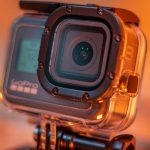DIY Sewing Machines: Top Models Reviewed for All Skill Levels
Setting Up Your Sewing Machine
Before you start any sewing project, setting up your sewing machine correctly is essential. You’ll need to familiarize yourself with your machine’s parts, follow the instruction manual, and ensure everything is properly loaded and aligned.
Getting Started with Your Machine
When you first unbox your sewing machine, make sure to read the instruction manual. This guide offers specific steps relevant to your model. Take note of each component such as the needle, presser foot, and bobbin.
Plug in the machine and check if it powers up correctly. Place the machine on a sturdy table to avoid any movement during sewing. Locate the on/off switch, and become familiar with the settings and buttons, especially the buttonhole function and stitch selection options.
Adjust the tension settings according to the fabric you will be using. Winding and loading the bobbin correctly is crucial for a smooth sewing experience. Improper bobbin loading can lead to issues. Some machines offer easy-to-load bobbin systems, making the process straightforward for beginners.
Step-by-Step Guide for First Use
Begin by threading the upper thread through the designated threading path as outlined in your manual. This often includes passing the thread through thread guides, tension discs, and the sewing needle. Ensure that the thread spool is securely placed on its pin.
Next, load the bobbin by placing it in the bobbin case and following the threading instructions specific to your machine. Double-check that the bobbin thread path is clear. Lower the presser foot using the lever to keep the fabric steady.
Test the sewing machine on a scrap piece of fabric to ensure everything is functioning correctly. This initial test helps in identifying any adjustments needed before starting actual projects. It’s advisable to try out different stitches and settings, including the buttonhole function, to get a feel for the machine’s capabilities.
By now, you should feel more comfortable with your sewing machine’s setup and ready to embark on various sewing tasks. Every step, from reading the instruction manual to the final test sewing, ensures optimal performance and a smoother sewing experience.
Where to Buy and Additional Resources
Purchasing a sewing machine involves more than finding the right model; it requires locating trustworthy sellers and tapping into valuable learning resources.
Finding the Best Deals on Sewing Machines
To secure the best deals on sewing machines, shoppers might consider looking at both online and in-store options. Websites like Amazon, eBay, and specialty stores such as SewingMachinesPlus.com frequently offer competitive prices. Additionally, large retailers like Walmart and Target sometimes provide seasonal discounts.
For those interested in unique finds, local sewing and craft stores can be valuable. They often carry a selection of models and may offer demonstrations, free technical support, and advice. Comparing prices across these different platforms can ensure a good deal while also considering packages that include necessary accessories like size 16 needles.
Learning and Community Support
After purchasing a sewing machine, many users seek out resources to help them make the most of their new tool. Online platforms like Craftsy, YouTube, and various blogs offer a range of tutorials from basic sewing techniques to advanced projects. Joining online forums or social media groups dedicated to sewing can provide community support and inspiration.
Local sewing workshops and classes allow for hands-on learning and direct interaction with instructors. These classes can range from beginner to advanced levels, providing guidance on specific machine features such as speed control and needle threader functions. Engaging with these resources can greatly enhance the sewing experience, making the journey both enjoyable and educational.



